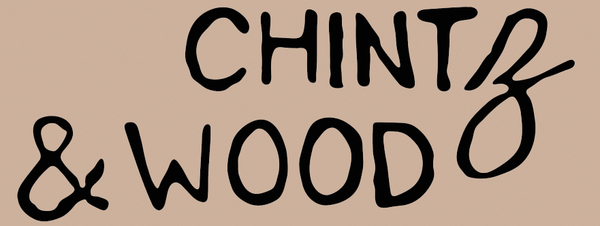Colour from Nature: How I Dye Textiles for Chintz and Wood

Dyeing the fabric for the cushions and lampshades I make for the shop is my favorite part of my work. There’s something deeply satisfying about pulling a piece of fabric out of the dye pot and seeing what nature has done with it. No two pieces are quite the same — and that’s what I love.
At Chintz and Wood, I use natural dyes to colour vintage and deadstock fabric. Madder, avocado stones, garden flowers, walnut husks, and fresh indigo all play a part. It’s slow work, but it's also quietly joyful — and deeply sustainable.
Why natural dyes?
Natural dyeing isn’t just about soft, earthy colours (though those are lovely). It’s about making use of what’s already around us. Many of the dyes I use come from food waste, garden trimmings, or foraged plants. I like that I’m giving those materials another purpose before they go into the compost.

Preparation
Each piece of fabric is carefully washed or scoured, to remove dirt but also any kind of finishing on the fabric. Once it's scoured the fabric is pre-treated with a mordant (which helps the dye stick). Before dyeing I usually decide what the fabric is going to be. Dyeing depends on the weight of fabric (WOF), so I roughly cut the fabric to the appropriate size of the lampshade or cushion I plan to make. That way I don't waste either fabric or dye material.

Dyeing
The material is weighed, and then the quantity of dye material is calculated. so that it can be dyed to the right shade. The material is heated gently in a large stainless steel pot, giving it time for the color to develop before adding the fabric. Some colours take hours. Others develop over days. It depends on the material — and the mood of the dye pot.
I often use:
- Avocado pits for dusky pinks
- Walnut husks for beige and browns
- Leaves and plant material for different shades of yellow
- Fresh indigo for turquoise and light green
- Madder for many shades of red, orange and pink
I’m not aiming for perfection — I’m looking for character. The variations are what make each cushion cover or lampshade one-of-a-kind.

A different way of making
In a world of synthetic colour and mass production, natural dyeing feels like a small act of resistance. It’s slower, quieter, and more connected to the seasons. The results are softer and subtler — and often surprising.
If you're in Worthing, pop into the shop and have a look. Some pieces still smell faintly of the dye pot. Every mark tells a story.
